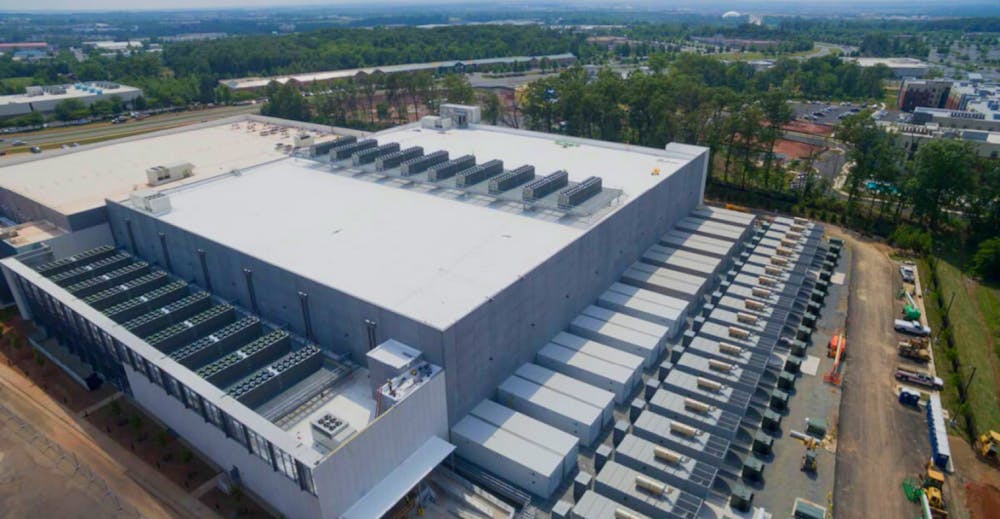Virginia guards the largest data center market in the world. Data centers are buildings with a network of computer servers that store, process and distribute large amounts of internet data. Without data centers, Americans would lose the ability to use internet-reliant services like email, smart devices, online banking and more. Nationally, 60 percent of U.S. data centers are centralized in Northern Virginia — on only 1,304 sq. miles of land. Globally, Northern Virginia ranks number one for most data center locations, followed by Silicon Valley and Singapore.
As processors of imperative data, Virginia has a nuclear target on its back. Russia, China and North Korea all have the capability to deploy nuclear High Altitude Electromagnetic Pulses — or HEMP missiles — that can shutdown data centers and internet functionality. These missiles are non-human targeting, detonate 30 to 80 miles above the ground and have a 500-mile blast radius. In this radius, electronics below are permanently or temporarily disabled. The degree to which electronics are disabled depends on two situations — the electronics proximity to the HEMP and if the electronics have EMP shielding or not.
The built environment of Northern Virginia makes it a prime nuclear target. The centralization of 60 percent of U.S. data centers on 1,304 sq. miles of land makes EMP proximity close-range. Moreover, military grade EMP shielding is recommended by the Department of Homeland Security but not enforced. When it is up to data center discretion, many argue that the cost to implement EMP protections is too high and the threat of EMP assault is too low. Yet, security experts say Russia, China and North Korea all have the capability to deploy HEMP missiles that can target and take out U.S. internet and data communications.
The threat of a nuclear EMP being covertly flown into U.S. airspace could be reality. On Feb. 4., the military finally shot down a Chinese spy balloon that had flown across the U.S. for a week. Gen. Glen VanHerck, commander of the Northern American Aerospace Defense Command, reported the balloon's surveillance equipment weighed “in excess of a couple thousand pounds” and was the size of a regional jetliner. In 2018, China had a program for similar high-altitude balloons — that program’s payload was a 4,500 pound hypersonic missile that would give the CCP “an unstoppable nuclear weapon.” The Chinese have tested attaching an EMP to hypersonic missiles that could deploy from a balloon without being caught on radar due to the weapon traveling six times the speed of sound. These hypersonic, EMP missiles are “designed to generate an intense electromagnetic pulse capable of wiping out communication and power supply lines.” In reality, an EMP-wielding, hypersonic missile carried by balloon could assault the 60 percent of U.S. data centers in NOVA covertly and effectively.
While diversifying data center locations would be the best way to avoid the effects of a nuclear EMP attack, Virginia cannot simply move the centers for three reasons. One, unlike inland states, Virginia already has an existing network of fiber-optic, subsea cables that transport data and communications to and from Europe, Latin America and Africa. Two, compared to other states, Virginia boasts an unmatched retail sales tax exemption for data centers — in 2021, Virginia data centers saved $124.5 million. Finally, Virginia counties make millions in annual property taxes from hosting data centers. Loudoun County has 10.1 billion dollars in data center computer equipment, which produces $424 million annually in property taxes. The existing infrastructure, tax breaks and property taxes let the centralization of data centers in Virginia make financial sense. Nonetheless, data center centralization is a national security issue.
A short-run compromise that safeguards national security and satisfies corporate desires would be to move subsequent data center construction to Southern Virginia. Data centers built in Southern Virginia could still utilize coastline fiber-optic cables, reap tax breaks and provide lucrative property taxes to their host counties. But, barriers to data centers moving southward are two-fold. One, the existing data and communications infrastructure in Northern Virginia dwarfs Southern Virginia’s. Two, while Northern Virginia primarily has investor owned utilities to distribute electricity, Southern Virginia primarily relies on electric co-ops, which are not as reliable to power data centers. As long as we don’t pack a singular co-op with multiple, energy-demanding data centers, Southern Virginia should be able to support several new data center locations.
In the long-run, we must mandate DHS, military grade, EMP shielding for all U.S. data centers. For new data center projects, the cost to add military grade EMP protections is minimal. Adding EMP shielding to newly built data centers will cost one to five percent of the facility's capital value. Yet, protections will be more expensive if shielding has to be retrofitted onto already existing data center systems.
A HEMP nuclear strike in Northern Virginia could target and take out more than half of U.S. data centers, crippling internet and data communications. If we are to minimize the risk of an attack and safeguard national security, we must, in the short-run, diversify data center location to Southern Virginia. In the long-run, we must mandate DHS’ military grade EMP shielding to all U.S. data centers. With these directions carried out, we can deter an attack where Northern Virginia data centers become a nuclear target.
Rylan Dawson is an Opinion Writer who writes on Health, Tech, and Environment for The Cavalier Daily. He can be reached at opinion@cavalierdaily.com.
The opinions expressed in this column are not necessarily those of The Cavalier Daily. Columns represent the views of the authors alone.







